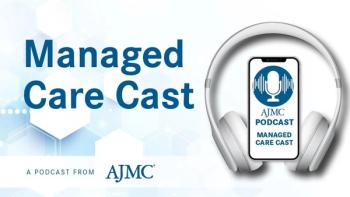
Report Documents Steep Increase of Once-Rare Ocular Fungal Infection in Those With COVID-19
In India, incidence of the deadly fungal infection grew throughout 2021, while supply chain shortages inhibited optimal treatment for each patient.
Results of a case-control study on patients with COVID-19–associated rhino-orbitocerebral mucormycosis (CAM) in India indicate a high mortality rate, while those with severe COVID-19 or severe
In addition to the hundreds of thousands of deaths resulting from the COVID-19 pandemic, “the immunocompromised state after recovery from COVID-19 has also predisposed patients to opportunistic infections, with fungal infections being common among these,” researchers explained.
Reports of CAM among these individuals have subsequently increased as transmission continues, with the largest series reported in India. Previous research has shown uncontrolled diabetes and use of high-dose systemic corticosteroids serve as main risk factors for CAM.
“Prior to the pandemic, mucormycosis was considered a rare disease, with an incidence of 0.005 to 1.7/million,” authors of an
In an effort to better understand outcomes in terms of cumulative mortality and its risk factors, investigators analyzed data from a large tertiary care multidisciplinary hospital in India that experienced a CAM outbreak between March 1 and May 30, 2021. They opted to investigate a single center to mitigate the risk of variability in disease severity and treatment patterns often present in a large aggregation of data from multiple centers.
A total of 73 individuals were included in the retrospective case-control study. Researchers collected basic demographic information in addition to clinical data from ophthalmic evaluations and blood workups. All patients who presented with CAM and had a minimum follow-up of 30 days or died within 30 days due to CAM were included, they explained.
Patients had a mean (SD) age of 53.5 (12.5) years and the majority (n = 48) were male. Vaccination status was only available for 47 patients, of whom none had taken both doses of the available vaccine and 5 had taken the first dose. Of those with CAM, 26 (36%) died within 30 days.
Analyses revealed:
- CAM developed at a median of 28 (IQR, 15-45; range, 4-90) days after recovery from COVID-19
- The cumulative probability of death was 26% (95% CI, 16%-41%) at day 7 and doubled to 53% (95% CI, 39%-69%) at day 21
- Sinus debridement was performed in 18 of 51 patients (35%), and 5 of 52 (10%) underwent exenteration, whereas intravenous lyophilized amphotericin B was administered to 48 patients (66%)
- A multivariate Cox proportional hazards regression analysis showed that receiving mechanical ventilation in the past was associated with a nearly 9-fold increased risk of death (hazard ratio [HR], 8.98; 95% CI, 2.13-38.65; P = .003)
- Patients who had visual acuity of light perception or better had a 46% lower risk of death (HR, 0.56; 95% CI, 0.32-0.98; P = .04)
- Intravenous amphotericin B administration was associated with a reduced rate of exenteration (0 vs 5 of 25 [20%]; P < .001)
- On multivariate analysis, those who received intravenous amphotericin B had a 69% reduced risk of death (HR, 0.31; 95% CI, 0.06-1.43; P = .13)
Investigators also broke down the severity of COVID-19 prior to CAM, with 2 patients receiving home care and ambulatory, 7 who were hospitalized but did not receive supplemental oxygen, 43 who were hospitalized and needed supplemental oxygen, 14 who were hospitalized and needed noninvasive ventilation and ventilator support, and 3 who needed mechanical ventilation. COVID-19 severity was not available for 4 patients, they said, adding “most patients had received corticosteroids (58 of 59 [98%]) intravenously, and 48 of 65 patients (74%) had diabetes.”
Due to the limited sample size and retrospective nature of the study, results may not be generalizable, marking a limitation. However, “the mortality indicators we observed, such as assisted ventilation and presence of severe orbital manifestations, can help physicians triage patients for emergency procedures such as FESS [functional endoscopic sinus surgery] and administer systemic antifungal agents when in short supply,” authors wrote.
The overwhelming number of CAM cases presenting to the hospital made it so ideal treatments could not be administered to all patients. Typically, care for patients with rhino-orbital-cerebral mucormycosis involves “a multidisciplinary and resource-intensive approach combining surgical debridement by otolaryngologists, neurosurgeons, and orbital surgeons, as well as treatment by specialists in infectious disease, endocrinology, nephrology, laboratory medicine, pharmacology, and pathology,” the editorial states.
Daily costs of antifungal medications alone can reach $1000, independent of hospital admission costs, while limited availability of drugs due to pandemic-induced supply chain shortages could also complicate treatment.
Based on the findings, CAM infection necessitates urgent live-saving treatment with a combination of FESS and intravenous antifungal agents, researchers stressed.
“Further study is needed to document cumulative mortality rates from centers across the world so that meaningful comparisons can be made and mortality indicators can be studied thoroughly,” they concluded. “Further research is also needed to understand whether CAM differs in any of its characteristics from prepandemic cases,” and whether vaccination against COVID-19 impacts rates in anyway.
References
1. Choksi T, Agrawal A, Date P, et al. Cumulative mortality and factors associated with outcomes of mucormycosis after COVID-19 at a multispecialty tertiary care center in India. JAMA Ophthalmol. Published online December 9, 2021. doi:10.1001/jamaophthalmol.2021.5201
2. Tooley AA, Bradley EA, and Woog JJ. Rhino-orbital-cerebral mucormycosis—another deadly complication of COVID-19 infection. JAMA Ophthalmol. Published online December 9, 2021. doi:10.1001/jamaophthalmol.2021.5202
Newsletter
Stay ahead of policy, cost, and value—subscribe to AJMC for expert insights at the intersection of clinical care and health economics.














































